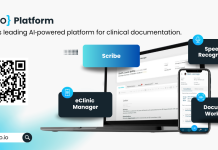John Kelly, Head of Account Management and Public Sector at Freshworks, discusses the digital transformation of public services during COVID-19
The global pandemic has been a catalyst for rapid innovation; with local councils and healthcare providers turning to technology to help them deliver public services remotely. With social distancing, threats of a second wave of the virus and a large influx of citizens requests, all while working with limited resources, the need to provide a seamless digital public service has never been more essential.
Encouragingly, we have already seen some examples of this over the past few months. Research from the Royal College of GPs found that before lockdown about 25% of GP appointments were carried out remotely, with about 70% face-to-face. Since lockdown began the figures have been reversed. But the question remains – will this become part of the new normal, or just a necessary alternative while the situation remains precarious?
Delivering a seamless digital experience despite tight budgets
With local services facing a £7.8 billion funding gap by 2025, it is imperative that councils, and the medical services that fall under their remit, are able to continue to deliver the services that constituents expect on a tighter budget. Citizens are used to getting their local restaurants to deliver for them, or ordering an Uber straight from their phone, all at the click of a button. Understandably, many want the same experiences from the public services they are accessing – quicker GP appointments that can be booked through an app, and parking permits and council tax all sorted through a simple, central online portal.
What steps therefore can local government departments tangibly take to meet citizen expectations now and in the future?
-
Unify platforms for citizen-support services
One of the main pain points for local government departments at this time is being able to deal with the large influx of critical citizen requests while working on limited resources. They need to find the right streamlined technology services to reduce waiting times and accelerate services so that everyone across the organisation can easily access them and are familiar with them. Stockport Metropolitan Borough Council (Stockport MBC) recently experienced this very pain point, receiving a very high volume of queries around tax, benefits, waste and Registrars. Lack of integration with the existing IT infrastructure, and activities like logging tickets were too time consuming for the service agents and impacted the processing time for each request. Another challenge was the difficulty to manually gather data for analysis and informed decision making.
Things like unified cloud solutions can solve headaches like the above, facilitating service delivery management and automated workflows, with ticket routing and helpful prioritisation and categorisation of requests. Furthermore, they can also aid in the easier discovery of information and identifying performance patterns. Unified cloud platforms ultimately help keep everything in one place and help time-stretched teams get the visibility they need to make faster on-the-ground decisions when dealing with citizen requests. In the case of Stockport MBC, the team implemented a new SaaS-based service desk to help deal with the sheer volume of queries it receives. The service desk can help the team to track more accurately and manage priorities resulting in a 94.8% Service Level Agreement (SLA) adherence.
-
Time to embrace chatbots and automation
According to McKinsey, as many as four out of five processes in HR, finance and application processing are at least partially automatable, with the potential to reduce costs by 30% through digital transformation of public services.
Automation is critical to boost productivity and reduce administrative burden. Use of automated workflows, self-service and bot-assisted solutions not only reduce the administrative burden but also help the government meet citizen expectations with better and faster services. The benefits of automation also include the ability for improved decision making by gaining a holistic and more accurate view of service demand and performance in the delivery environment. These developments are shaping a new automation age that is smarter and complementary to existing processes.
Given the current situation with COVID-19, it is imperative for public sector departments to deliver services in a more effective and streamlined manner. Automation technologies such as artificial intelligence (AI), automated self-service and workflows significantly help in this.
-
Enhance collaboration across departments
The public service environment is a complex web and is made up of various public, private and voluntary agencies or departments delivering a wide range of services. The need to deploy a citizen-centric approach is widely accepted but the challenge resides in achieving this across all departments. Not to mention, it is also a process involving continuous change. Breaking down administrative siloes that inhibit collaboration and communication between departments can be achieved by seizing the opportunities from cloud or SaaS applications. These provide the flexible environment needed to integrate various software used for different functional needs.
While a single platform does not serve as a ‘one size fits all’ solution for an end-to-end service chain specifically because this differs for every organisation, it offers the capabilities of a powerful service delivery platform and the ability to build innovative apps and scale mission-critical business operations on a case by case basis. By extending the capabilities of digital transformation of public services by integrating with other products in the ecosystem, this eliminates the operational difficulties posed by a complex multi-vendor environment.
‘Necessity is the mother of invention’ has never been truer in the current global situation. The automation of citizen services can deliver efficiency gains to help reduce the burden that the public sector currently faces, whilst ensuring that all citizens are able to access the support and services in a way that is most convenient for them.











